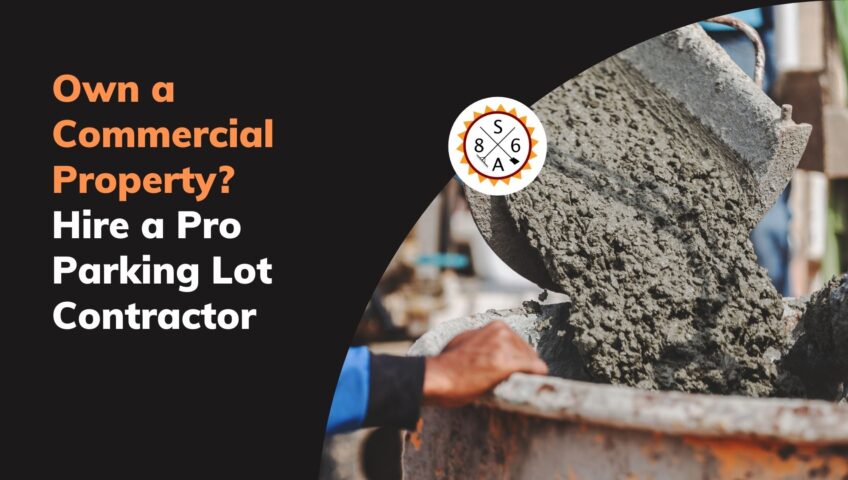
Who Pays for Building and Maintaining Highways?
As you drive down the road, you may not spend a lot of time thinking about who was responsible for building them. At the same time, the safety, security, and quality of our roads are tremendously important. What would happen if our roads were not well-maintained? You would have a hard time getting where you need to go. Therefore, if you are having issues with local roads and highways, who is responsible for building and maintaining them? There are several important points you should keep in mind.
Where Does the Funding Come From?
First, who is responsible for paying people to build and maintain our roads and highways? This usually comes in the form of taxes. Taxes are collected on numerous items. Then, this funding is used to construct our roads. For example, fuel taxes that are collected by the federal, state, and local governments are often used to keep the roads in good working order. And some parts of the country, there are also tolls that are placed on highways and bridges. If tolls are collected, these funds are used to maintain our roads and bridges as well.
Who Hires People To Build and Maintain Roads?
So, who makes the hiring decision? Who is responsible for hiring people to build and maintain our roads? The vast majority of roads and bridges fall under the responsibility of state and local governments. Even though the federal government does play a role, most professionals are hired by state and local governments to work on our roads and bridges. Therefore, it is responsible for those making hiring decisions to make sure they hire the right people for the job. That is where local contractors are essential.
Local Contractors Do the Vast Majority of the Work
When it comes to roads and bridges, the best people for the job are local contractors. Local contractors have the training and experience necessary to build and maintain our roads and bridges. For example, anyone who is planning on laying out a new road for the first time will have to work with contractors who can help them find the right material for the job.
Then, if a repair is needed down the road, this is something else that is also handled by a local contractor. It is critical to make sure the repair is completed properly on the first attempt. That is why state and local officials have to work with professional local contractors, placing them in the best positions possible to do their jobs well.
Enlist the Help of Superior Aggregates
If you want to make sure that your roads are constructed properly, then you have to work with a local asphalt company. With the help of a professional asphalt contractor, you can rest easy, knowing that your roads are going to be constructed properly on the first attempt. That is where Superior Aggregates can help you. We have an unparalleled level of experience when it comes to working with roads of all shapes and sizes. We can anticipate problems before they develop, circumventing them before they derail the project. If you want your project completed on time and under budget, it would be our pleasure to assist you. Give us a call today to learn more about how we can help you!
As you drive down the road, you may not spend a lot of time thinking about who was responsible for building them. At the same time, the safety, security, and quality of our roads are tremendously important. What would happen if our roads were not well-maintained? You would have a hard time getting where you need to go. Therefore, if you are having issues with local roads and highways, who is responsible for building and maintaining them? There are several important points you should keep in mind.
Where Does the Funding Come From?
First, who is responsible for paying people to build and maintain our roads and highways? This usually comes in the form of taxes. Taxes are collected on numerous items. Then, this funding is used to construct our roads. For example, fuel taxes that are collected by the federal, state, and local governments are often used to keep the roads in good working order. And some parts of the country, there are also tolls that are placed on highways and bridges. If tolls are collected, these funds are used to maintain our roads and bridges as well.
Who Hires People To Build and Maintain Roads?
So, who makes the hiring decision? Who is responsible for hiring people to build and maintain our roads? The vast majority of roads and bridges fall under the responsibility of state and local governments. Even though the federal government does play a role, most professionals are hired by state and local governments to work on our roads and bridges. Therefore, it is responsible for those making hiring decisions to make sure they hire the right people for the job. That is where local contractors are essential.
Local Contractors Do the Vast Majority of the Work
When it comes to roads and bridges, the best people for the job are local contractors. Local contractors have the training and experience necessary to build and maintain our roads and bridges. For example, anyone who is planning on laying out a new road for the first time will have to work with contractors who can help them find the right material for the job.
Then, if a repair is needed down the road, this is something else that is also handled by a local contractor. It is critical to make sure the repair is completed properly on the first attempt. That is why state and local officials have to work with professional local contractors, placing them in the best positions possible to do their jobs well.
Enlist the Help of Superior Aggregates
If you want to make sure that your roads are constructed properly, then you have to work with a local asphalt company. With the help of a professional asphalt contractor, you can rest easy, knowing that your roads are going to be constructed properly on the first attempt. That is where Superior Aggregates can help you. We have an unparalleled level of experience when it comes to working with roads of all shapes and sizes. We can anticipate problems before they develop, circumventing them before they derail the project. If you want your project completed on time and under budget, it would be our pleasure to assist you. Give us a call today to learn more about how we can help you!




